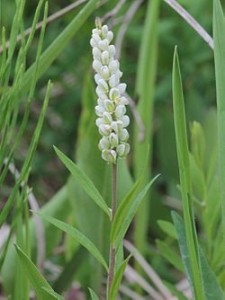Senega is a plant. The root is used to make medicine.
Contents
Uses
Senega is used for swelling (inflammation) of the throat, nose, and chest; for lung conditions including asthma, chronic bronchitis, and emphysema; and for rattlesnake bite. It is also used to cause sweating, increase saliva, loosen phlegm, and cleanse the bowels.
Benefits
This plant had many uses among Native Americans. The Cherokee used it as an expectorant and a diuretic, and for inflammation, croup, and common cold. The Chippewa used preparations of the root to treat convulsions and bleeding wounds. The Cree chewed the root for sore throat and toothache. According to Canadian botanist Frère Marie-Victorin, the Seneca may have been inspired to use the tortuous root to treat snakebite by its resemblance to the tail of a rattlesnake.
The root was exported to Europe in the 1700s and was sold widely by pharmacists into the 1800s. It was marketed as a treatment for pneumonia. It is still in use as an herbal remedy. It is ground and made into patent medicines, mainly remedies for respiratory complaints. It is added to cough syrups, teas, lozenges, and gargles. It is toxic in large amounts, and overdose causes such symptoms as diarrhea and “violent vomiting”.The powdered root can be sternutatory (sneeze-inducing).
The root product is called Senegae Radix, Radix Senegae, or simply senega. Active compounds include saponins such as senegin, as well as phenolic acids, sorbitol derivatives, methyl salicylate (oil of wintergreen), and sterols. The expectorant property comes from the irritation of mucous membranes by the saponins, which causes an increase in respiratory secretions and a decrease in their viscosity, giving a productive cough.
Cautions
Senega is considered safe when taken by mouth short-term. Long-term use can be UNSAFE. It can cause stomach irritation, diarrhea, dizziness, nausea, and vomiting.
Not enough is known about the safety of using senega as a gargle or applying it to the skin.
Special Precautions & Warnings:
Pregnancy and breast-feeding: It’s UNSAFE to take senega by mouth if you are pregnant. Senega might make the uterus contract, and it might also start menstruation. These effects could cause a miscarriage. Don’t take senega by mouth.
There isn’t enough information about the safety if applying senega to the skin during pregnancy. It’s best not to use it.
There also isn’t enough information to know whether taking senega by mouth or using it on the skin during breast-feeding is safe. Stay on the safe side and avoid use.
Fever: Senega can affect the central nervous system. Don’t use it if you have a fever.
Stomach and intestinal conditions including ulcers, ulcerative colitis, and Crohn’s disease: Don’t use senega if you have one of these conditions. It can irritate the intestine.
Interactions
Please read the instructions and talk to your health practitioner!
Other names
Chinese Senega, Herbe au Lait, Klapperschlangen, Laitier, Milkwort, Mountain Polygala, Polygala, Polygala de Sénéca, Polygala de Virginie, Polygala Glomerata, Polygala japonica, Polygala Root, Polygala Reinii, Polygala Sénéca, Polygala senega, Polygalae Radix, Polygala tenuifolia, Racine de Polygala, Racine de Serpent à Sonnettes, Radix Polygalae, Rattlesnake Root, Senaga Snakeroot, Seneca, Sénéca, Seneca Snakeroot, Senega, Senega Snakeroot, Seneka, Snake Root, Yuan Zhi
References
Source: WebMD, http://www.webmd.com/vitamins-supplements/ingredientmono-679-SENEGA.aspx?activeIngredientId=679&activeIngredientName=SENEGA
Wikipedia, https://en.wikipedia.org/wiki/Polygala_senega

